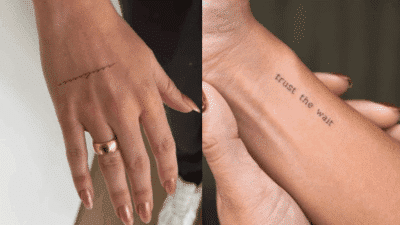The snake tattoo has an undeniable magnetic pull, a primal whisper from ancient times that continues to captivate and intrigue. More than just a striking piece of body art, a snake tattoo is a powerful statement, rich with layers of meaning and cultural significance. It’s a design that transcends fleeting trends, holding its own as a timeless symbol of transformation, wisdom, and raw, untamed energy. If you’re pondering adding a serpent to your skin, you’re not just choosing a cool design; you’re tapping into millennia of symbolism.
This isn’t just about ink; it’s about making a personal declaration. From the intricate coils of a realistic python to the minimalist lines of a stylized cobra, snake tattoos offer an incredible range of artistic expression. But beyond the aesthetics, what truly makes them fascinating is the story they tell, a narrative as old as humanity itself. We’re going to dive deep into the world of snake tattoos, uncoiling their ancient meanings, exploring popular designs, and guiding you through everything you need to know before embracing this iconic symbol on your skin. Get ready to explore a world where art meets ancient mystique, making your next tattoo a true conversation starter.

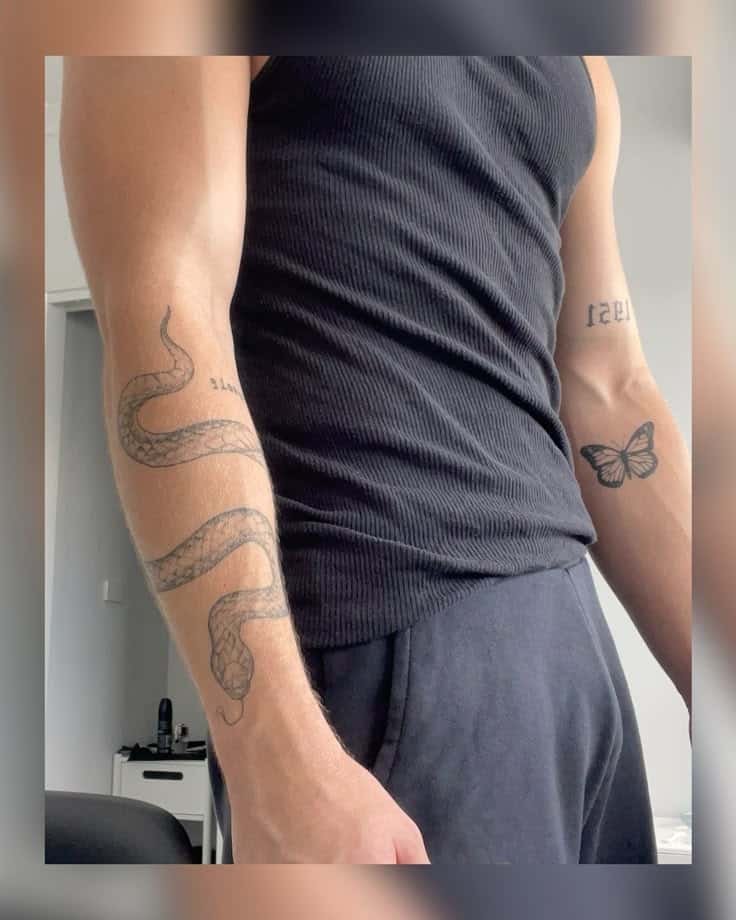
The Ancient Allure of the Serpent: A Symbol Across Cultures
Snakes have slithered through human mythology and folklore since the dawn of civilization, commanding both reverence and fear. Their unique characteristics – shedding skin, venomous bite, silent movement, and often hidden nature – have made them potent symbols in virtually every culture across the globe. This widespread and deeply ingrained symbolism is precisely what gives the snake tattoo its enduring power and versatility.
In ancient Egypt, the cobra, particularly the Uraeus, was a symbol of royalty, divine authority, and protection, often depicted on the pharaohs’ crowns. It represented sovereignty and the cycle of life and death. For the Greeks and Romans, the snake was intimately tied to healing and medicine. The Rod of Asclepius, featuring a single snake coiled around a staff, remains a prominent symbol of medicine today, representing rejuvenation and the physician’s art. The shedding of skin was seen as a powerful metaphor for rebirth and renewal, a constant cycle of life overcoming decay.
Many indigenous cultures also revered snakes. In some Native American traditions, snakes symbolized fertility, rain, and protection, acting as guardians of sacred places. Mesoamerican civilizations, like the Aztecs and Mayans, worshipped feathered serpents such as Quetzalcoatl, a deity representing creation, knowledge, and wisdom. This powerful figure embodied the union of earth and sky, combining the serpent’s earthly wisdom with the bird’s celestial freedom.
Even in Abrahamic religions, where the serpent often takes on a more negative connotation (as in the Garden of Eden), its presence is undeniably significant, representing temptation, knowledge, and a pivotal moment of transformation. However, it’s crucial to remember that this interpretation is but one facet of a much richer, global tapestry of snake symbolism. Across Asian cultures, particularly in Hinduism and Buddhism, Nagas (divine, semi-divine, or mythical serpent beings) are often protectors of sacred springs, treasures, and even Buddha himself. They embody wisdom, power, and fertility, and are sometimes depicted with human upper bodies and serpent lower bodies.
The circular serpent, the Ouroboros, is perhaps one of the most universally recognized symbols of eternity and the cyclical nature of the universe. Depicting a snake (or dragon) eating its own tail, it represents the infinite cycle of creation and destruction, life and death, and the self-sufficiency of the cosmos. This symbol is found in ancient Egyptian funerary texts, Norse mythology (Jörmungandr), and Gnostic traditions, underscoring the deep human fascination with endless cycles.
This rich historical and cultural tapestry ensures that a snake tattoo is never “just a snake.” It carries with it an echo of ancient power, a whisper of myth, and a depth of meaning that makes it a profoundly personal and universally resonant choice for body art. Whether you connect with its protective qualities, its link to healing, or its representation of eternal cycles, the serpent offers a powerful narrative to uncoil on your skin.

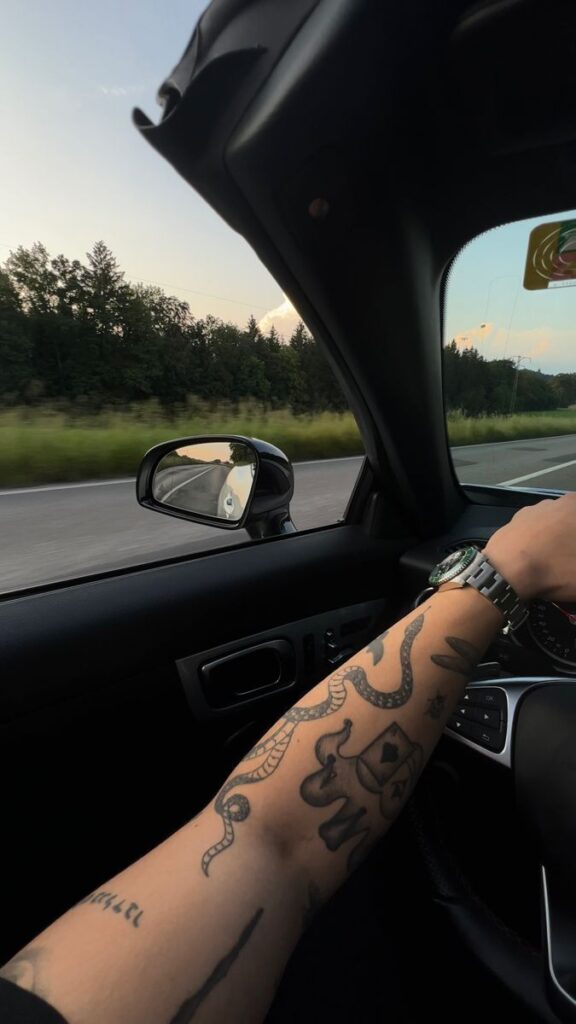
Unpacking the Deeper Meanings Behind Snake Tattoos
When you choose a snake tattoo, you’re not just selecting a cool design; you’re embracing a symbol loaded with profound and often contradictory meanings. This duality is part of what makes the snake so captivating. Understanding these layers can help you choose a design that truly resonates with your personal journey and beliefs.
Transformation & Rebirth
One of the most powerful and widely recognized meanings of the snake is transformation and rebirth. Snakes regularly shed their skin, leaving behind their old selves to emerge renewed and refreshed. This natural process is a potent metaphor for personal growth, overcoming challenges, letting go of the past, and embracing new beginnings. If you’ve gone through a significant life change, conquered an addiction, or simply feel like you’ve evolved into a new person, a snake tattoo can be a powerful emblem of that journey. It’s a constant reminder that change is natural, and renewal is always possible.
Healing & Medicine
As mentioned, the Rod of Asclepius, with a single snake coiled around a staff, is an international symbol of medicine and healing. This association dates back to ancient Greece, where Asclepius was the god of medicine. The snake’s ability to shed its skin was seen as a symbol of rejuvenation and healing. For those who work in healthcare, have overcome illness, or have a deep connection to the healing arts, a snake tattoo can represent recovery, resilience, and the power of medicine.
Protection & Guarding
Snakes are often depicted as guardians. Their watchful eyes, silent movement, and potent venom make them formidable protectors. In many cultures, they guard sacred spaces or hidden treasures. A snake tattoo can symbolize protection, a fierce loyalty to oneself or loved ones, or a warning to those who might wish harm. It can represent a boundary, a personal shield, or the strength to defend what you hold dear. This meaning is particularly strong when the snake is depicted in an aggressive stance, fangs bared, or coiled defensively.
Wisdom & Knowledge
In ancient mythologies, snakes were often associated with secret knowledge, wisdom, and even prophecy. Their close connection to the earth was seen as a link to primal truths and hidden insights. The serpent in the Garden of Eden, while often villainized, offered knowledge, albeit forbidden. A snake tattoo can represent a quest for truth, deep introspection, intellectual curiosity, or a connection to ancient wisdom. It can signify a discerning mind or a person who values hidden truths over superficial appearances.
Fertility & Life Force
Due to their reproductive cycles and connection to the earth, snakes have long been associated with fertility, life force, and primal energy. In some cultures, they are seen as creators of life or symbols of abundance. This meaning often intertwines with their regenerative abilities. A snake tattoo can symbolize vitality, creativity, new life, or a profound connection to the natural world’s generative power. It’s a celebration of life in its most raw and potent form.
Duality: Good vs. Evil, Creation vs. Destruction
Perhaps the most intriguing aspect of snake symbolism is its inherent duality. A creature that can heal (venom used in medicine) can also kill. A symbol of wisdom can also represent temptation. This makes the snake a perfect emblem for the complexities of life and the human experience. It can represent the balance of opposing forces, the interconnectedness of light and shadow, or the understanding that good and evil often coexist within the same entity. This duality allows for a deeply personal and nuanced interpretation of your tattoo.
Danger & Power
Let’s be honest, snakes can be intimidating. Their predatory nature, often silent approach, and the lethality of their venom imbue them with an undeniable sense of danger and power. A snake tattoo can represent raw power, strength, independence, or a willingness to face danger head-on. It can also be a symbol of a survivor, someone who has navigated treacherous paths and emerged stronger. This particular meaning often appeals to those who want to project an aura of strength and resilience.
Eternity & Cycle
The Ouroboros, the snake eating its tail, is a powerful ancient symbol representing eternity, the cyclical nature of the universe, and self-sufficiency. It signifies the idea that life and death are intrinsically linked, part of an endless loop. For those who believe in cycles of reincarnation, the eternal return, or simply the ongoing flow of life, an Ouroboros tattoo is a profound choice. It’s a reminder that everything comes full circle, and even endings lead to new beginnings.
Each of these meanings can stand alone or combine to create a deeply personal narrative. Before getting your snake tattoo, spend some time reflecting on which of these powerful symbols resonates most with your own story and intentions.
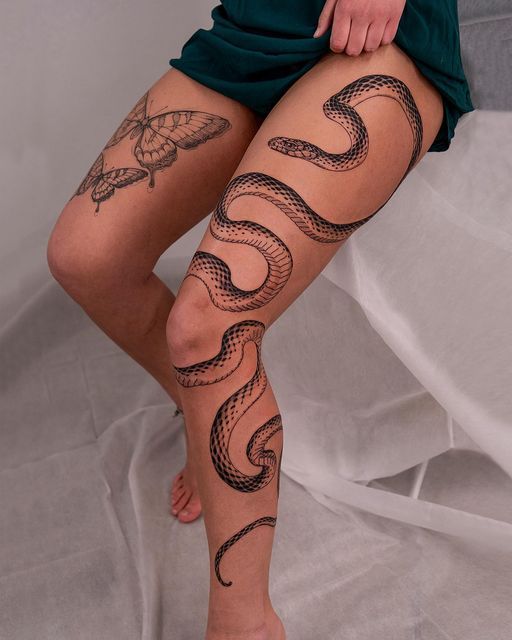
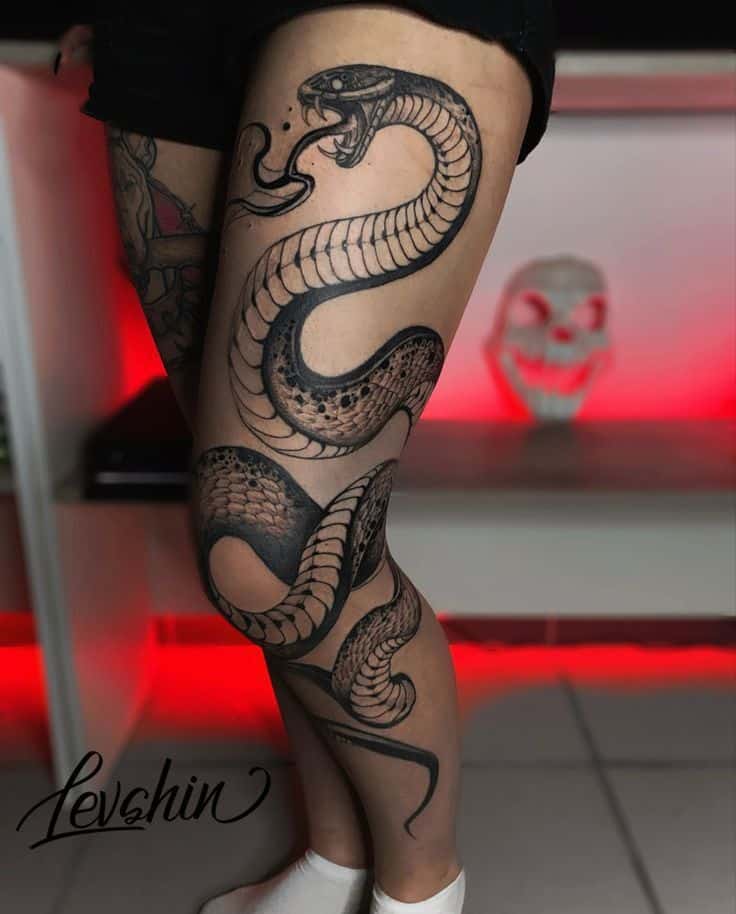
Popular Snake Tattoo Designs and Their Unique Flavors
The beauty of snake tattoos lies not just in their symbolic depth but also in their incredible artistic versatility. From hyper-realistic masterpieces to abstract geometric forms, there’s a snake design to suit every aesthetic. The choice of style dramatically influences the message and feel of your tattoo.
Realistic Snakes
These designs aim for photographic accuracy, capturing every scale, curve, and subtle glint in a snake’s eye. Artists skilled in realism can create truly breathtaking pieces that look like the serpent might slither right off your skin. Often rendered in black and grey, they can also incorporate vibrant colors to highlight species-specific patterns, like those of a king cobra or a rainbow boa. This style is perfect for those who appreciate the raw, natural beauty of the creature and want a highly detailed, striking image.
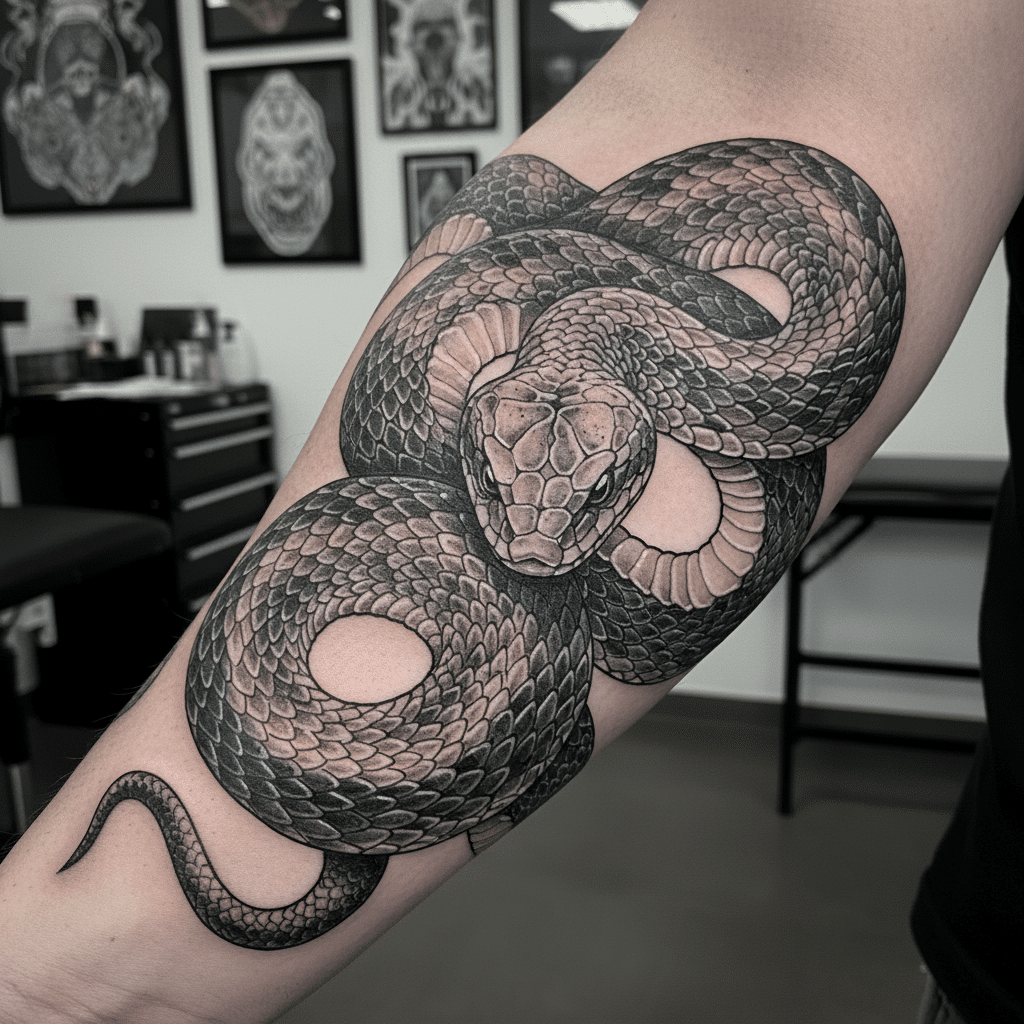
Minimalist Snakes
For a more understated yet equally impactful statement, minimalist snake tattoos are an excellent choice. These designs use clean lines, simple forms, and often negative space to suggest the snake’s shape and movement. They can be subtle and elegant, focusing on the silhouette or a stylized coil. This style is popular for smaller tattoos, placed on wrists, fingers, or behind the ear, offering a touch of mystery without overwhelming the skin. It’s perfect for someone who prefers a sleek, modern aesthetic.
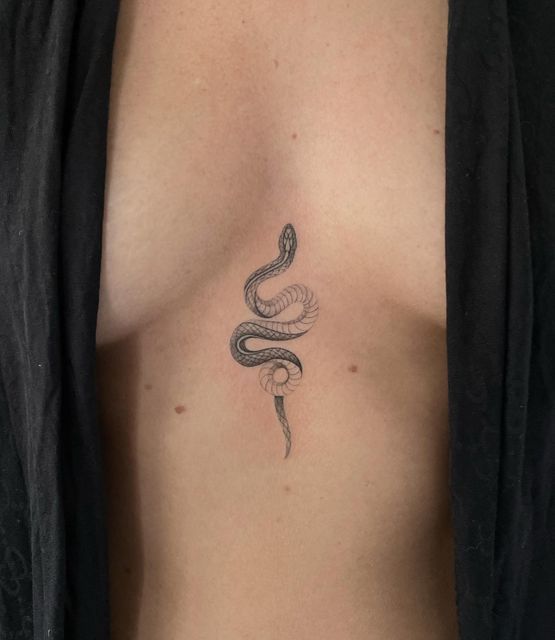

Traditional/Old School Snakes
Think bold outlines, limited color palettes (often primary colors like red, yellow, green, and black), and classic imagery. Traditional snake tattoos often feature the serpent coiled around a dagger, a rose, or a skull, embodying classic themes of temptation, danger, and beauty. These designs have a timeless appeal and a strong visual presence, rooted in early American tattoo culture. They carry a nostalgic charm and a rebellious spirit.
Japanese Irezumi Snakes
In traditional Japanese tattooing, snakes (hebi) are often depicted with incredible detail and dynamic movement, frequently intertwined with other powerful symbols like flowers (peonies, chrysanthemums, cherry blossoms), waves, or skulls. These designs are typically large, forming part of a full sleeve, backpiece, or bodysuit. The snake in Irezumi often symbolizes protection, good luck, and wisdom, contrasting with the beauty of the accompanying flora. The flowing lines and intricate scales are a hallmark of this majestic style.
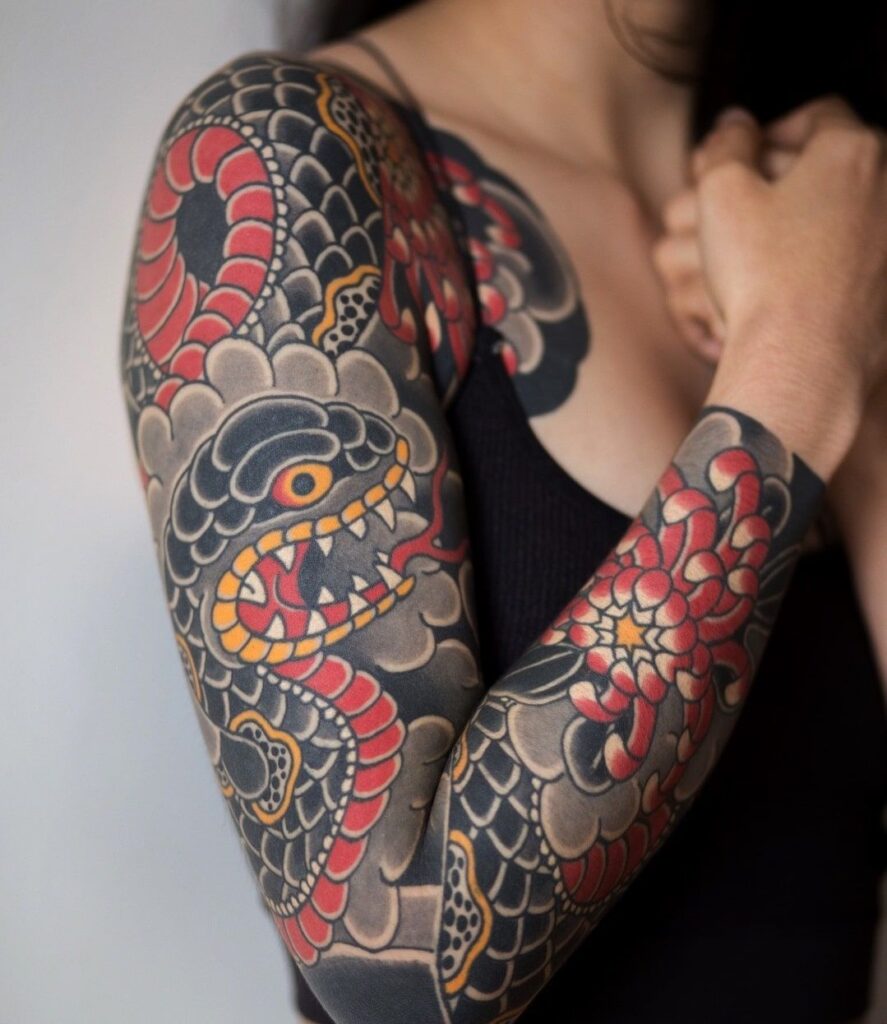
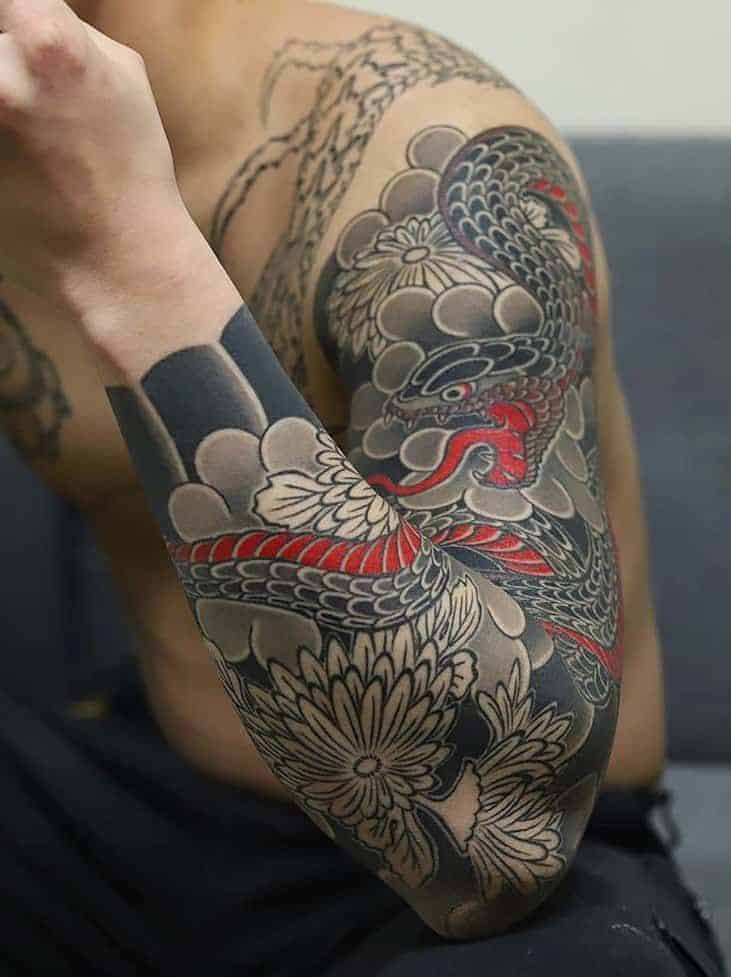
Geometric Snakes
A modern and abstract approach, geometric snake tattoos use clean lines, shapes, and patterns to form the serpent. This can range from highly complex mandalas featuring snake motifs to simplified, angular interpretations of the animal. Geometric designs offer a unique blend of ancient symbolism and contemporary aesthetics, often carrying an air of precision and deliberate thought. They appeal to those who appreciate structured design and symbolic abstraction.
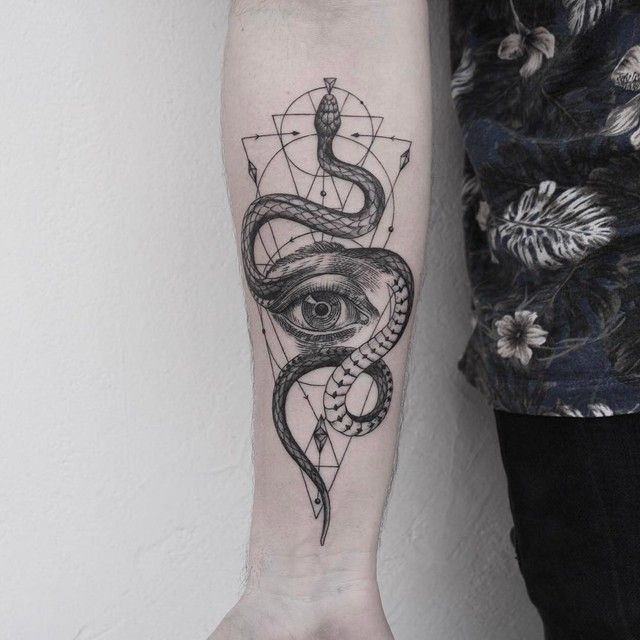
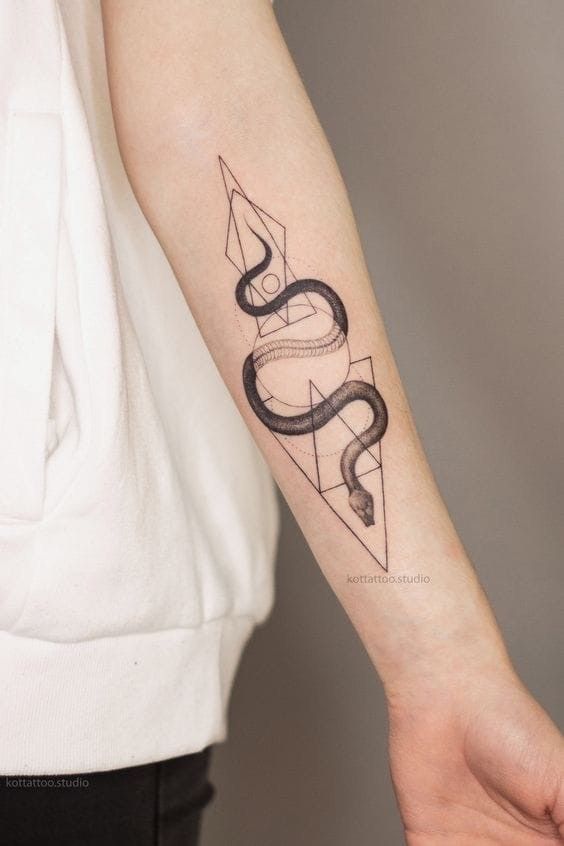
Tribal Snakes
Drawing inspiration from indigenous art forms, tribal snake tattoos feature bold, thick black lines and intricate patterns. These designs are often abstract and fluid, emphasizing the snake’s powerful movement and primal energy. They can represent a connection to ancient roots, a warrior spirit, or a deep respect for natural forces. Tribal designs are powerful and often cover larger areas, making a strong visual statement.
Ouroboros
This iconic design depicts a snake eating its own tail, forming a perfect circle. As discussed, it symbolizes eternity, the cyclical nature of life, death, and rebirth, and the self-sufficiency of the universe. The Ouroboros can be rendered in various styles, from detailed realism to simple line work, but its profound meaning remains constant. It’s a philosophical choice for a tattoo, a constant reminder of the endless flow of existence.
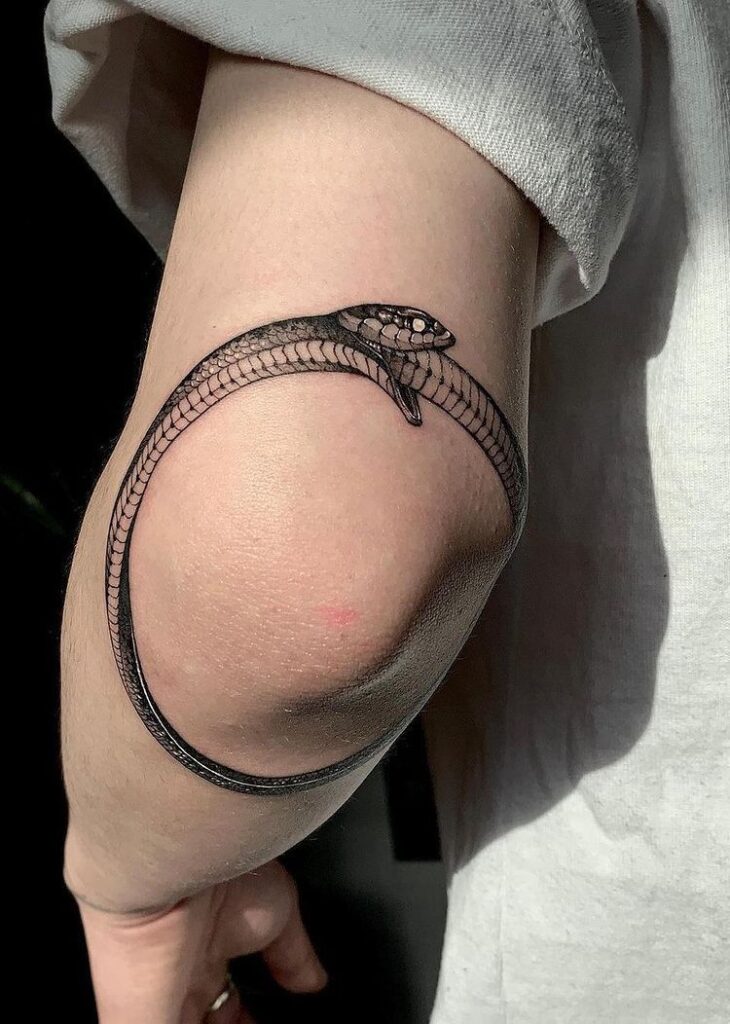
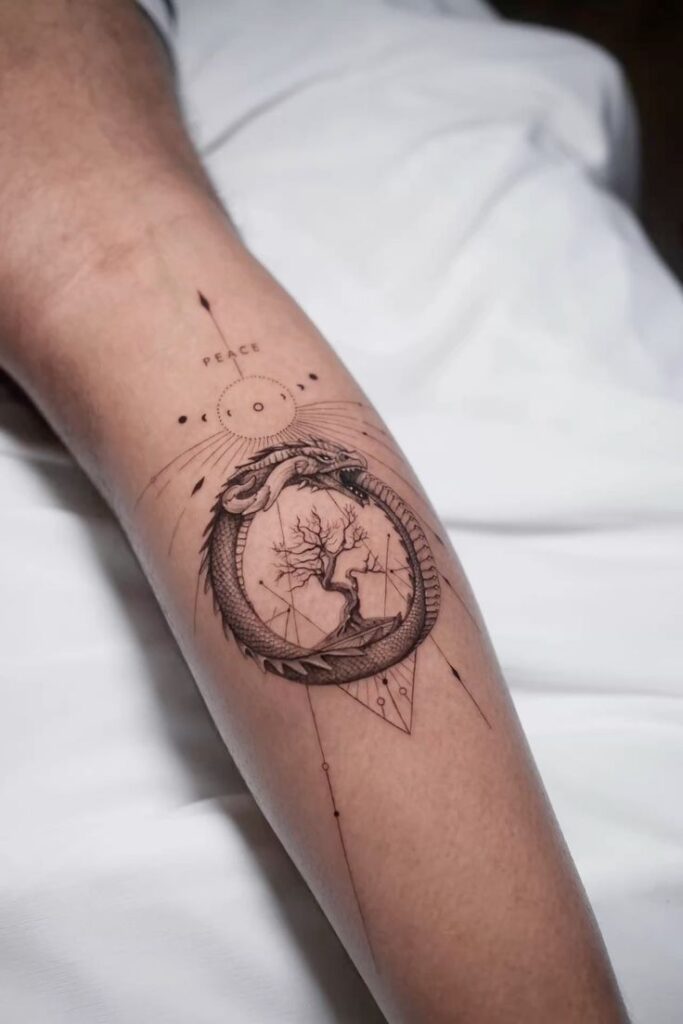
Snake with Flowers
Pairing a snake with delicate flowers creates a striking contrast between danger and beauty, wisdom and innocence, or mortality and new life. Common pairings include roses (love, passion, beauty, thorns for danger), lotus flowers (purity, enlightenment, rebirth), or peonies (wealth, honor, protection). This combination can soften the snake’s formidable image while adding layers of symbolic complexity, representing growth, overcoming adversity, or the beautiful, dangerous aspects of life.
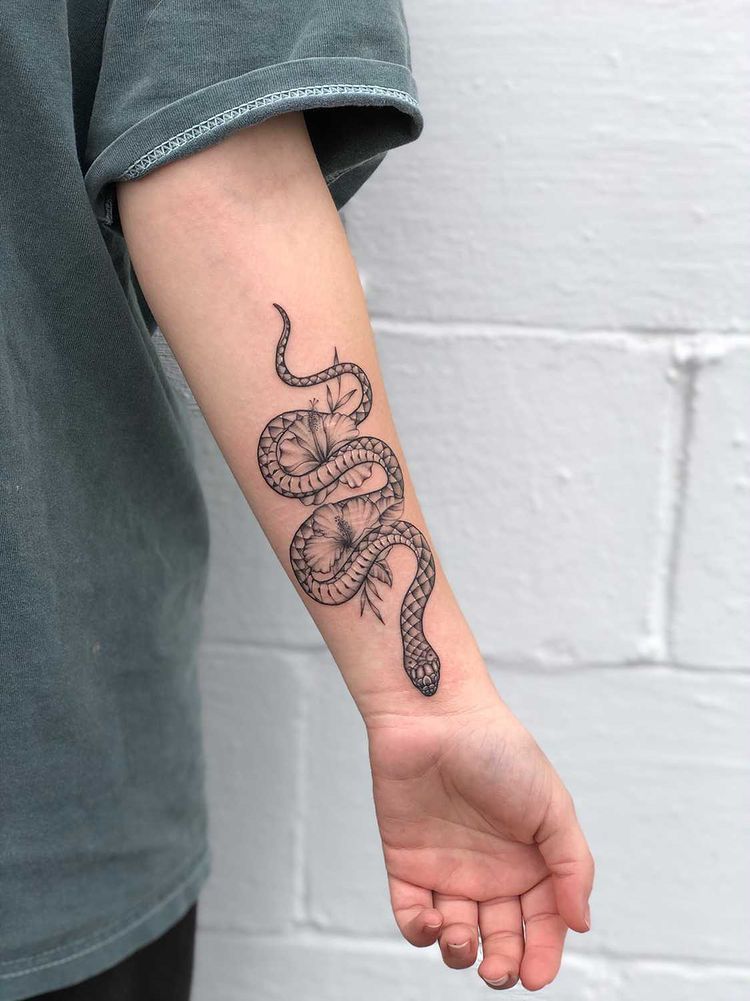
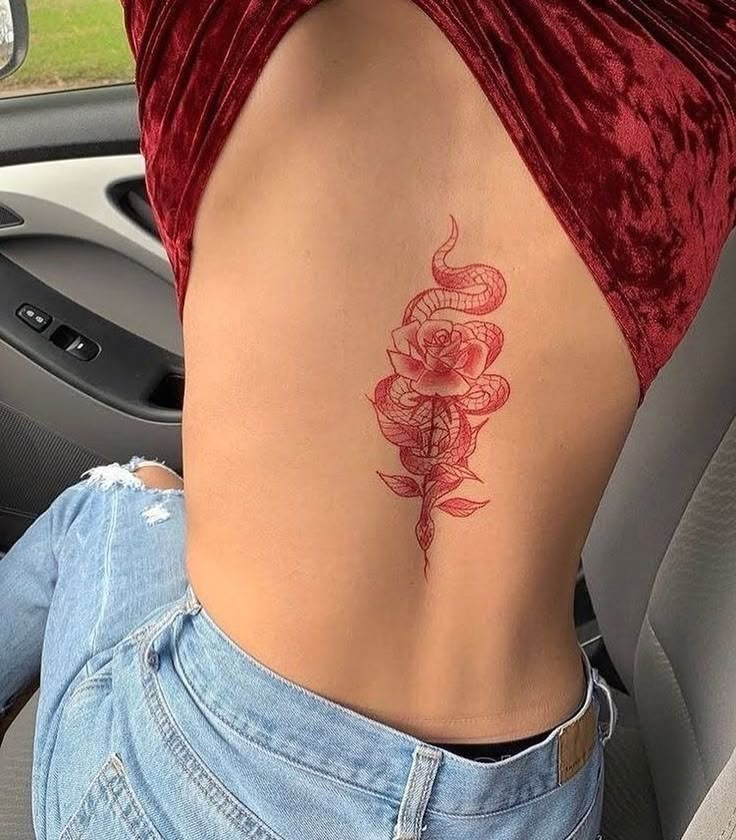
Snake with Dagger/Sword
A classic tattoo motif, the snake coiled around a dagger or sword amplifies themes of danger, betrayal, protection, and piercing truth. It can symbolize a readiness to fight, a warning against deceit, or the power to cut through illusions. This design is inherently aggressive and speaks to a formidable spirit, a person who is not afraid to confront challenges.
Snake and Skull
This powerful combination brings together two potent symbols of mortality, rebirth, and overcoming death. The snake emerging from or intertwined with a skull can represent the cycle of life and death, the idea that new life emerges from decay, or the triumph over fear and mortality. It’s a bold statement about embracing the transient nature of existence and finding strength in transformation.
When exploring different designs, remember that the artist’s personal touch and interpretation will also play a huge role. Look at various tattoo artist portfolios, especially if you have particular coolest drawing ideas in mind. This will help you find someone whose style aligns with your vision for your unique snake tattoo.
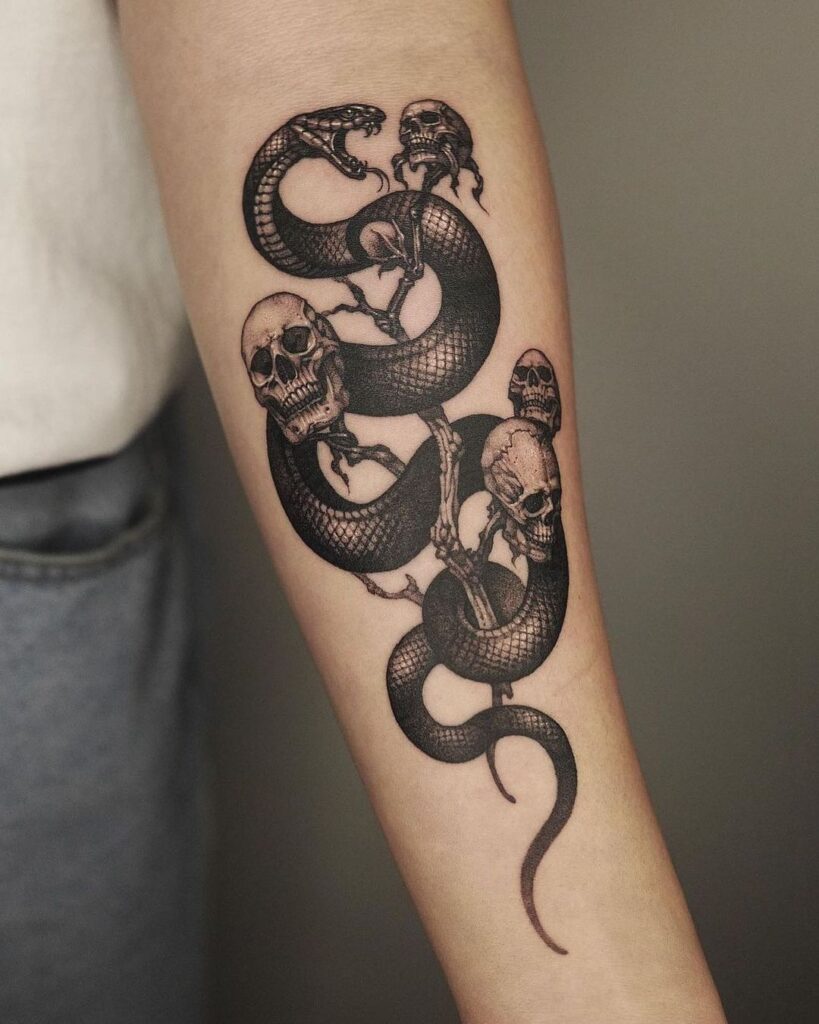
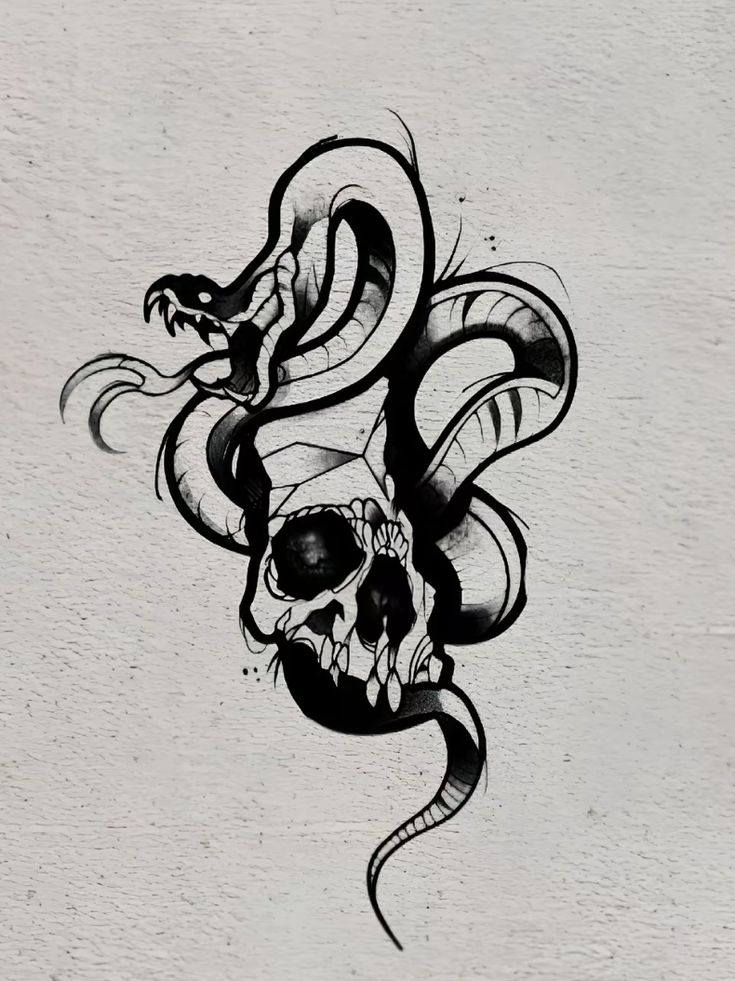
Choosing Your Canvas: Best Placements for Snake Tattoos
The placement of your snake tattoo is almost as important as the design itself. A snake’s fluid, coiling nature lends itself perfectly to various body parts, allowing the design to flow with your anatomy and enhance its meaning. The chosen canvas can emphasize the snake’s movement, its protective stance, or its subtle mystery.
Arm (Sleeve, Bicep, Forearm)
The arm is one of the most popular spots for snake tattoos, and for good reason. Its cylindrical shape is ideal for designs that coil and wrap, creating a dynamic sense of movement.
- Full Sleeve: A snake can become the central element of a full sleeve, intertwining with other motifs or slithering up and down the entire arm. This offers a large canvas for intricate details and complex narratives.
- Bicep/Forearm: A snake can coil around the bicep, giving it a strong, muscular look, or wrap around the forearm, making it easily visible and a constant reminder of its meaning. Many choose a snake design for their 10 arm tattoos for women or for men. Its natural flow complements the arm’s contours.
- Inner Arm: This more discreet area is suitable for smaller, more personal designs, allowing the snake to peek out subtly.
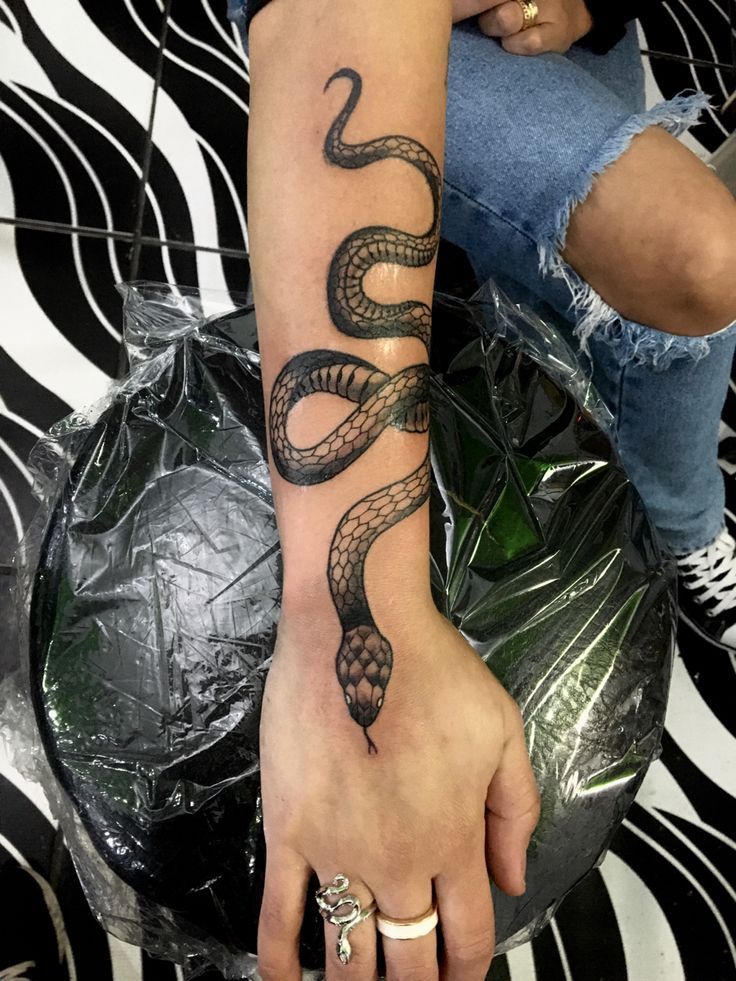

Leg (Thigh, Calf, Shin)
Like the arm, the leg offers an excellent long, cylindrical surface for snake designs.
- Thigh: A larger canvas, the thigh is perfect for elaborate, detailed snake tattoos that can span a significant area. The musculature allows for a powerful, flowing design.
- Calf: Similar to the forearm, the calf is a great spot for a snake to coil around, emphasizing its form and movement. It’s often visible but can also be covered easily.
- Shin: While potentially more painful, a snake running down the shin can create a striking, elongated design, enhancing the serpent’s sleekness.
Back
The back provides the largest canvas on the body, making it ideal for grand, intricate snake tattoos.
- Full Backpiece: A majestic snake, perhaps a Japanese Irezumi dragon-like serpent, can span the entire back, creating a breathtaking and powerful statement.
- Spine: A snake slithering up the spine can symbolize strength, support, or a connection to one’s core essence.
- Shoulder Blades: A snake positioned across the shoulder blades can appear watchful, protective, or ready to strike, aligning with the “guardian” symbolism.
Chest/Ribs
These areas are more intimate and personal, but offer a unique contour for snake designs.
- Chest: A snake can coil around the pectoral muscle, or be placed centrally, perhaps with its head at the sternum, symbolizing a connection to the heart or inner self. It’s a bold choice, especially for tattoo designs for men.
- Ribs: The rib cage provides a long, curved surface that a snake can follow, creating a sensual and dynamic flow. Rib tattoos are known for being more painful but can result in incredibly beautiful, flowing designs.
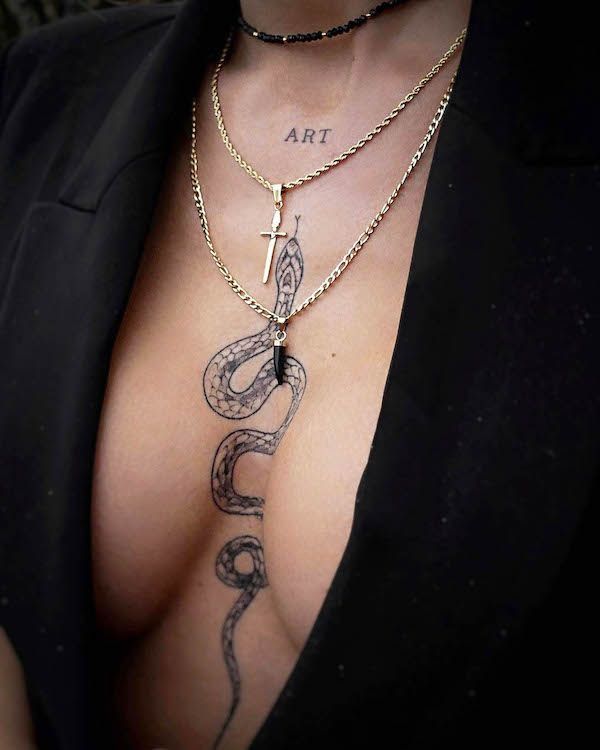
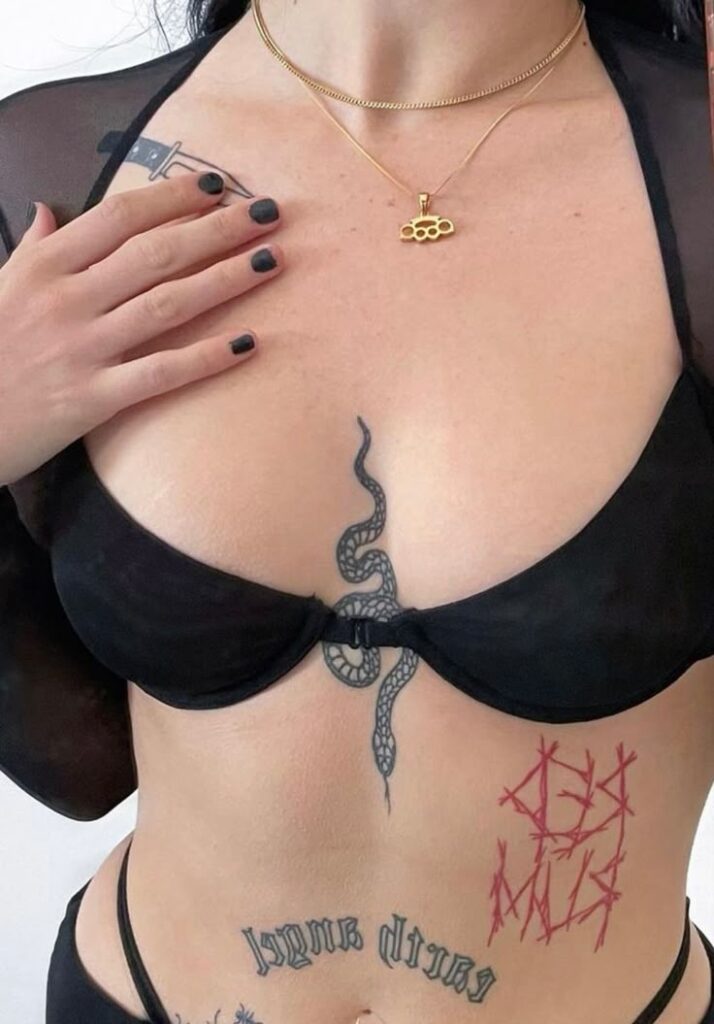
Hand/Finger
For those seeking a smaller, more visible, or subtle snake tattoo, the hand and fingers are options.
- Hand: A snake can coil around a finger, or a smaller design can be placed on the back of the hand. These are highly visible and can be a constant personal reminder of the tattoo’s meaning.
- Finger: Delicate, minimalist snake rings are a popular choice, offering a symbolic touch without being overly ostentatious.
Neck/Throat
These are bold placements, highly visible and often chosen by those who want their tattoo to be a prominent part of their identity.
- Neck: A snake design wrapping around the neck can symbolize power, protection, or a constant presence. It’s a strong statement.
- Throat: Even more daring, a snake on the throat can represent a powerful voice, a fierce spirit, or a deep personal transformation that cannot be hidden.
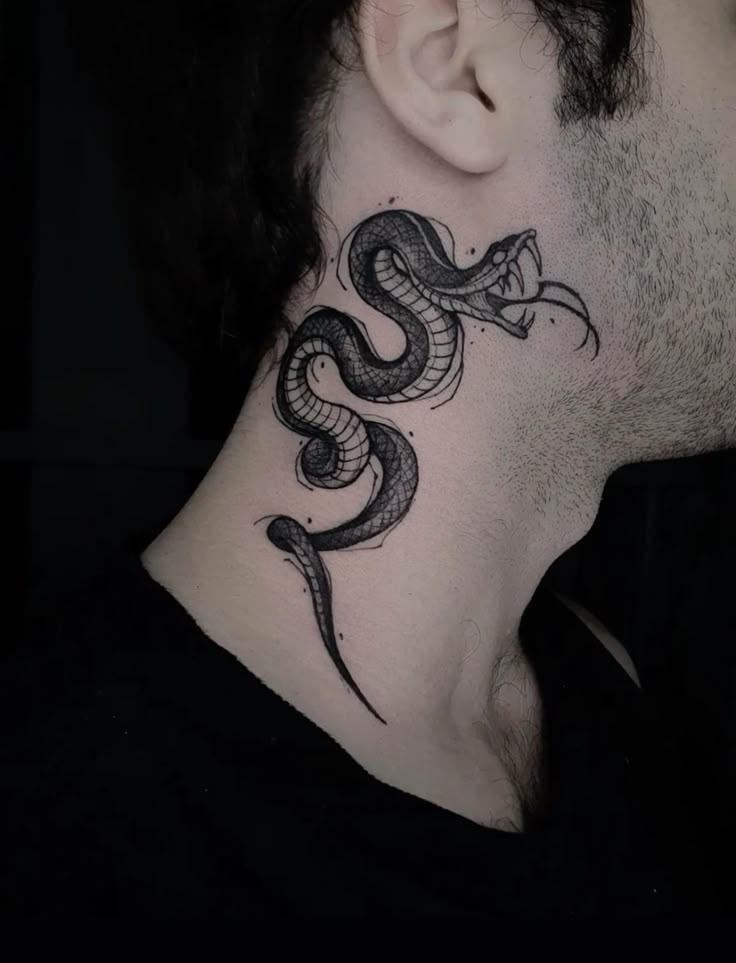
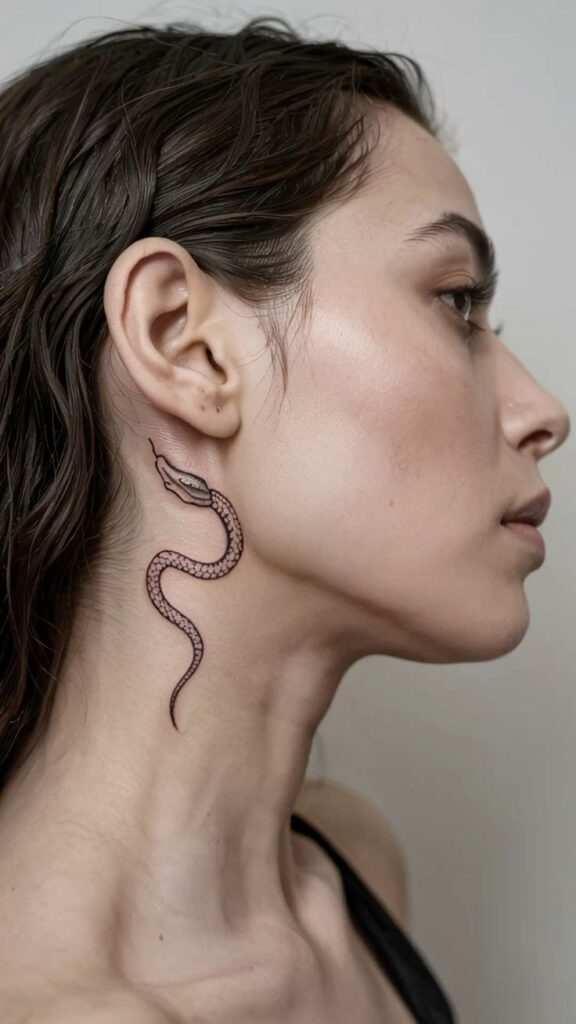
Wrist/Ankle
These smaller, more delicate areas are perfect for minimalist or fine-line snake designs.
- Wrist: A small snake wrapping around the wrist can represent a personal amulet, a constant reminder of rebirth or protection.
- Ankle: Similar to the wrist, a snake coiling around the ankle can be a subtle yet elegant design, often chosen for its symbolic connection to movement or being grounded.
When choosing placement, consider not only the aesthetic but also how the design will look over time, how easily it can be concealed (if necessary for work or other reasons), and your personal pain tolerance, as some areas are significantly more sensitive than others. The right placement can truly bring your snake tattoo to life.
Factors to Consider Before Getting Your Snake Tattoo
Getting a tattoo is a significant decision, especially one as symbolically rich as a snake. Before you commit, there are several crucial factors to weigh to ensure you end up with a piece of art you’ll love for years to come.
Artist’s Style and Expertise
This is paramount. Snake tattoos, especially realistic or intricate Japanese designs, require a high level of skill to capture the fluidity, scales, and expression correctly. Research artists whose portfolios specifically showcase excellent animal tattoos or the style you’re aiming for (e.g., realism, traditional, blackwork). Look at healed photos of their work, not just fresh ones. An experienced artist will be able to advise on placement, size, and detail to ensure your vision translates beautifully onto your skin. Don’t be afraid to ask questions and discuss your ideas thoroughly during a consultation.
Size and Detail
The size of your tattoo directly impacts the level of detail that can be incorporated. A highly detailed realistic snake with individual scales and intricate patterns will require a larger canvas to truly shine. Smaller tattoos often necessitate a more minimalist or stylized approach to prevent them from becoming a “blob” over time as lines bleed slightly. Consider how the size will affect the visual impact and longevity of the design. A tiny, super-detailed snake might look great initially but could blur into an unidentifiable shape years later.
Color vs. Blackwork
Do you envision a vibrant, colorful serpent or a sophisticated black and grey masterpiece?
- Color tattoos can capture the natural beauty of various snake species, highlight symbolic elements (like a green snake for healing or a red one for passion), and add a dynamic pop. However, colors can fade faster than black ink, requiring touch-ups over time.
- Blackwork tattoos (using only black ink, often with varying shades of grey) offer a timeless, bold, and often more dramatic look. They tend to age incredibly well and can create stunning contrasts and depth without relying on a spectrum of hues. Both have their merits; your choice depends on your aesthetic preference and desired longevity.
Pain Tolerance
Let’s be real: tattoos hurt. Some areas of the body are significantly more sensitive than others due to thinner skin, proximity to bones, or a higher concentration of nerve endings. For example, ribs, feet, hands, and the spine are generally considered more painful areas than the outer arm or calf. A larger, more intricate snake tattoo will also require more time in the chair. Be prepared for the discomfort, especially if you’re getting a significant piece. If this is your first tattoo idea, research pain levels for different body parts.
Aftercare Commitment
A beautiful tattoo is only half the battle; proper aftercare is crucial for its healing and long-term appearance. Be prepared to diligently follow your artist’s aftercare instructions for several weeks. This typically involves keeping the tattoo clean, moisturized, and protected from the sun. Neglecting aftercare can lead to infection, faded colors, or a poorly healed tattoo, diminishing its impact. Think of it as an investment in art – you want to protect it.
Personal Meaning
While snake tattoos carry rich universal symbolism, the most important meaning is the one you assign to it. Why a snake? What aspect of its symbolism resonates most deeply with your personal story, values, or aspirations? Is it transformation, protection, wisdom, or something else entirely? Reflecting on this personal connection will make your tattoo far more significant and satisfying. This isn’t just a random piece of art; it’s a part of your story.
Future Expansions
Consider if this snake tattoo is a standalone piece or if you plan to incorporate it into a larger design later, such as a full sleeve or back piece. Discuss this with your artist, as they can design the tattoo in a way that allows for future additions and ensures a cohesive look. Thinking ahead can save you headaches (and potential cover-up costs) down the line.
By carefully considering these factors, you’ll not only make a more informed decision but also approach your snake tattoo journey with confidence, ensuring a result that you’ll cherish for a lifetime.

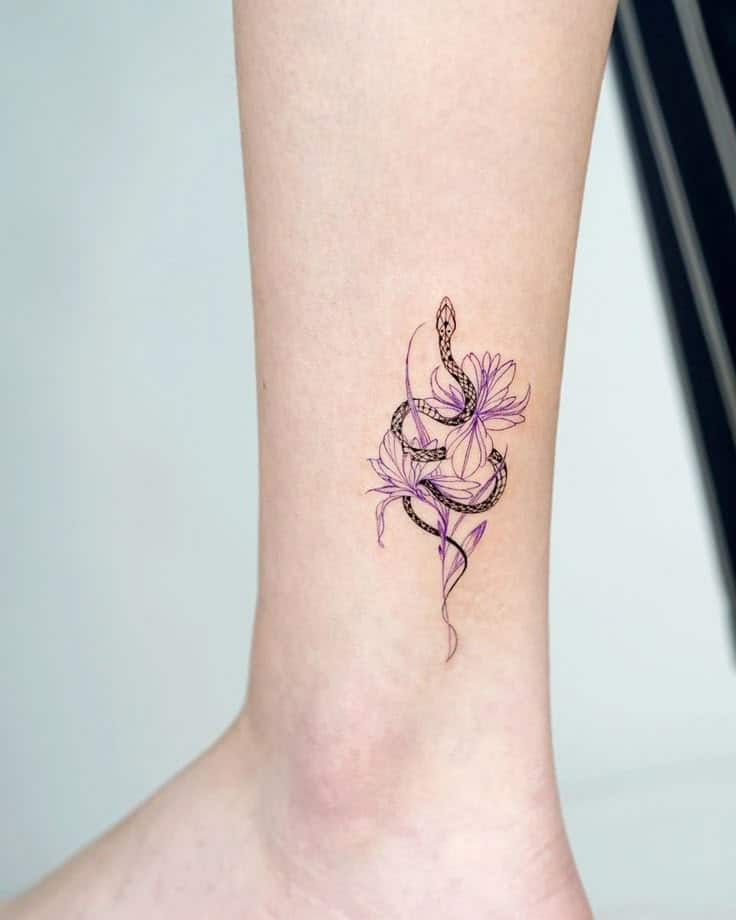
Caring for Your Coiled Masterpiece: Aftercare Essentials
You’ve got your awesome new snake tattoo – congratulations! Now, the real work begins: proper aftercare. This crucial phase dictates how well your tattoo heals, how vibrant its colors remain, and how sharp its lines stay for years to come. Think of it as protecting your investment in self-expression. Neglecting aftercare can lead to infection, scarring, and a faded or patchy tattoo.
Keep It Clean, But Don’t Overdo It
Your artist will likely cover your new tattoo with a bandage (either traditional cling film or a specialized “second skin” medical bandage). Follow their instructions on how long to keep it on. Once removed, gently wash the tattoo with lukewarm water and a mild, fragrance-free, antibacterial soap. Do this 2-3 times a day. Pat it dry with a clean paper towel – never rub with a cloth towel, which can harbor bacteria and snag on healing skin. Avoid harsh scrubbing or abrasive materials.
Moisturize, Moisturize, Moisturize
After washing and drying, apply a thin layer of fragrance-free moisturizer specifically designed for tattoos or a plain, unscented lotion (like Lubriderm or Aveeno). The key here is “thin layer” – you want to keep the skin hydrated, not smothered. Too much moisturizer can suffocate the tattoo and lead to problems. Moisturize 2-3 times a day, or whenever your tattoo feels dry and tight. This prevents scabbing from getting too thick and helps with itching.
Avoid Soaking and Submerging
For the first 2-4 weeks, or until your tattoo is fully healed, avoid prolonged water exposure. This means no baths, swimming pools, hot tubs, or ocean swimming. Showers are fine, but keep them brief and avoid direct, high-pressure streams on the tattoo. Submerging your tattoo in water can introduce bacteria and dilute the ink, leading to infection or fading.
Protect from the Sun
The sun is the enemy of a fresh tattoo. UV rays can cause ink to fade rapidly, even during the healing process. Keep your new snake tattoo completely out of direct sunlight for at least 4-6 weeks. Wear loose-fitting clothing that covers the tattoo when outdoors. Once healed, always apply a high-SPF sunscreen (SPF 30 or higher) to your tattoo, even on cloudy days. This is essential for long-term vibrancy. Think of it like protecting your skin from the sun when choosing your beach outfits 2025.
Loose Clothing is Your Friend
Wear loose, breathable clothing over your healing tattoo. Tight clothing can rub and irritate the fresh ink, potentially pulling off scabs prematurely or trapping moisture and bacteria. Natural fibers like cotton are ideal.
Resist the Urge to Pick or Scratch
As your tattoo heals, it will itch and scab. This is normal. Resist the urge to pick at scabs or scratch the area, no matter how tempting it is. Picking can pull out ink, cause scarring, and increase the risk of infection. If the itching is intense, gently pat the area or apply a little extra moisturizer.
Watch for Signs of Infection
While rare with proper aftercare, infections can happen. Keep an eye out for excessive redness, swelling, warmth, severe pain, pus, or fever. If you notice any of these symptoms, contact your tattoo artist for advice and consult a doctor immediately.
The healing process typically takes 2-4 weeks for the surface skin to heal, but the deeper layers can take several months. By diligently following these aftercare guidelines, you’ll ensure your stunning snake tattoo remains a vibrant and powerful piece of art for years to come.
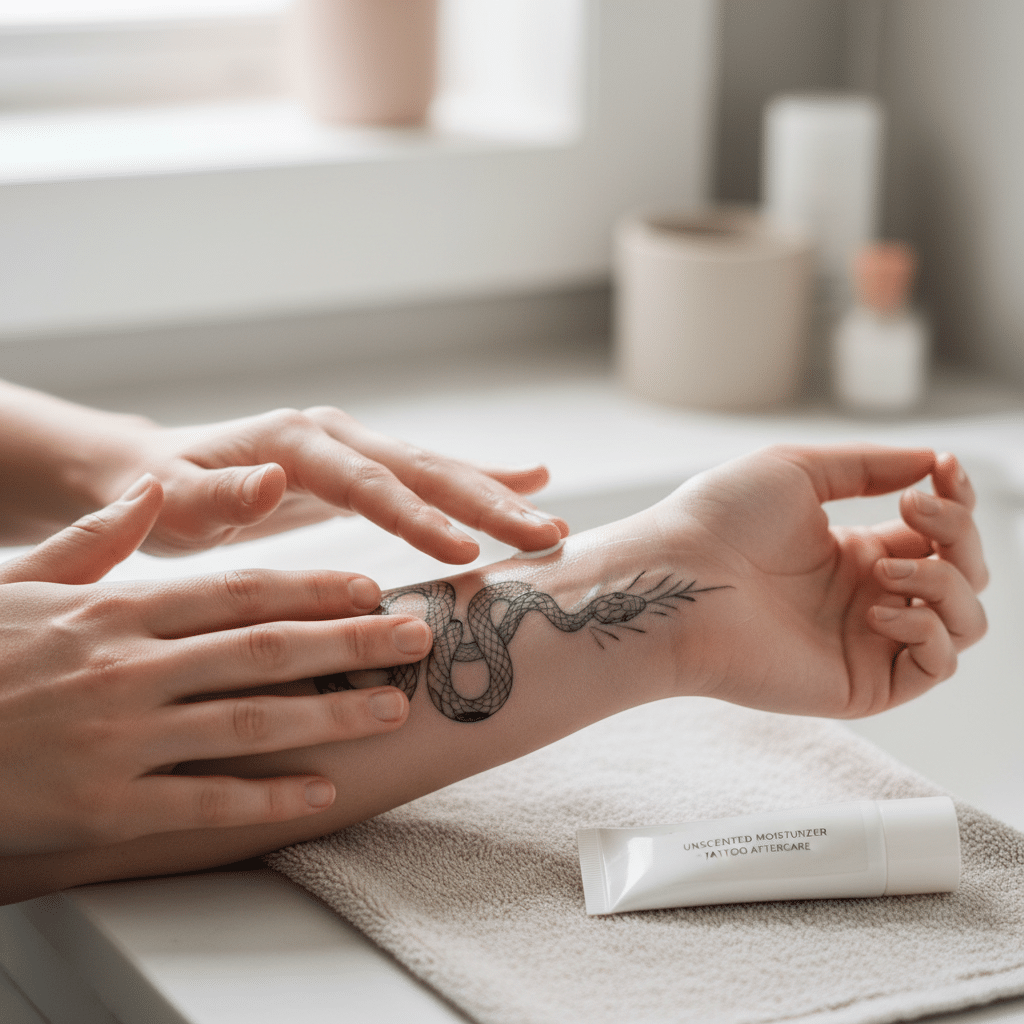
Conclusion: Embrace Your Serpent’s Tale
The snake tattoo is far more than just a cool design; it’s a timeless emblem, rich with history, myth, and personal significance. From the ancient allure of transformation and rebirth to the potent symbolism of wisdom, protection, and eternal cycles, the serpent offers a canvas for a profound personal statement. Whether you envision a hyper-realistic cobra coiling majestically up your arm, a minimalist Ouroboros on your wrist, or a traditional serpent battling a dagger, each design carries with it an echo of ancient power and a whisper of deep meaning.
Choosing a snake tattoo is an invitation to uncoil your own style, to embrace a symbol that represents growth, resilience, and the fascinating duality of life itself. It’s a testament to your journey, your strength, and your connection to universal themes that have captivated humanity for millennia. This unique piece of art on your skin will not only turn heads but also serve as a constant reminder of the powerful narrative you choose to embody.
So, as you ponder your next ink adventure, remember the depth and versatility of the snake. Do your research, find an artist whose vision aligns with yours, and dive into the fascinating world of serpentine symbolism. Embrace the journey, and let your chosen design tell your unique, powerful serpent’s tale.
- 26shares
- Facebook0
- Pinterest26
- Twitter0


